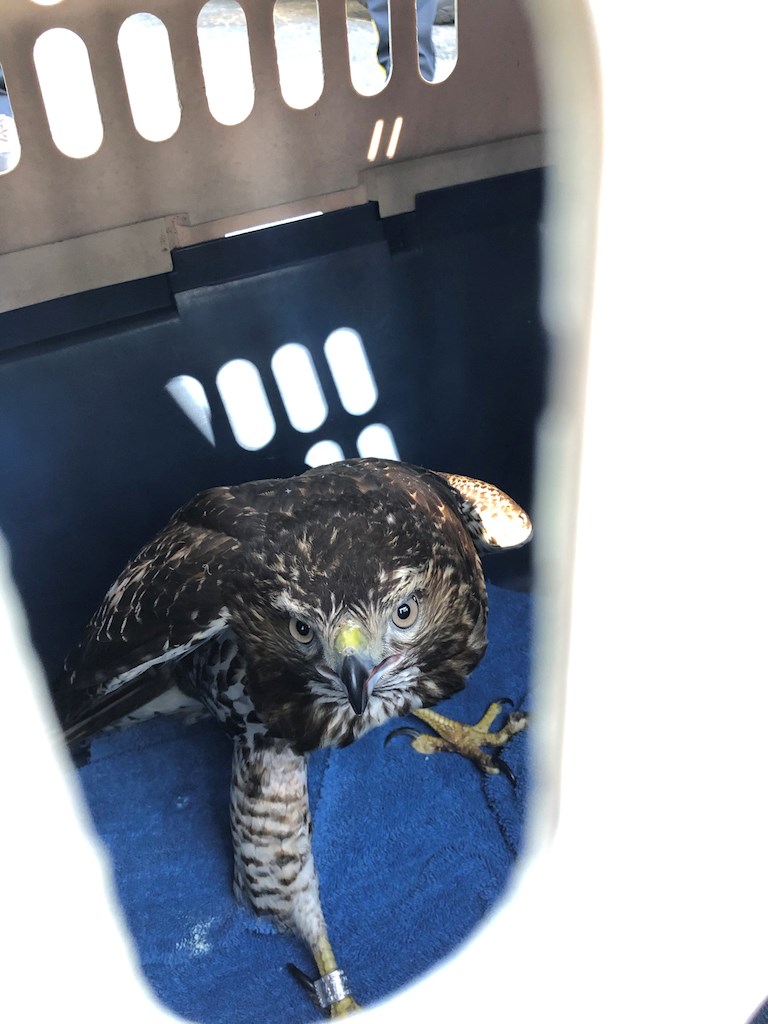A red-tailed hawk made a triumphant return to Bowen Island on the noon ferry Feb. 23.
The raptor was rescued at Cape Roger Curtis at the beginning of January, where he was found dehydrated and weak, suffering from lead poisoning.
“I honestly didn’t think he was going to make it – he was in such terrible, terrible shape,” says Kirsten Degner. She and her 10-year-old daughter Chloe took the bird to (OWL) Orphaned Wildlife Rehabilitation Facility in Delta, but rescuing Blaze – as they called the hawk – was a community effort.
It started with a Facebook post from Daniella Sorrentino at the beginning of January, wondering about a bird just sitting on the trail at the Cape.
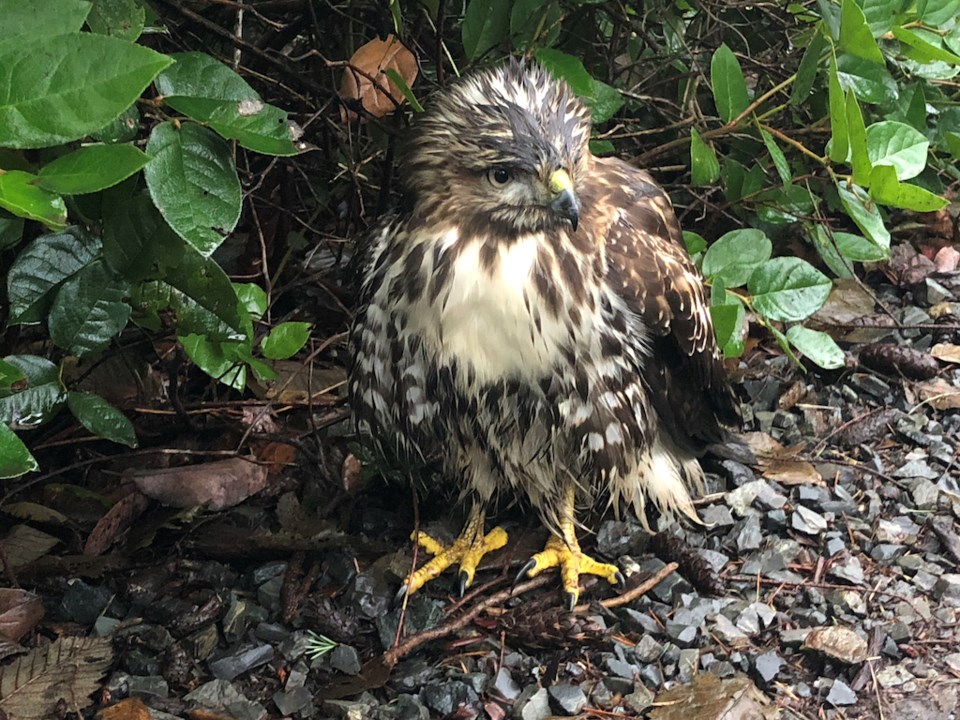 Blaze was found just standing on the trail at Cape Roger Curtis. Passersby knew he wasn't doing well and took action to save the hawk's life. By Kirsten Degner
Blaze was found just standing on the trail at Cape Roger Curtis. Passersby knew he wasn't doing well and took action to save the hawk's life. By Kirsten Degner
“She was really worried and didn’t know what to do about it, because it was going to be dark soon,” explains Kirsten. As Kirsten and Chloe have rescued animals in the past, they grabbed a carrier and a towel and headed to the Cape to see if they could help.
“I was able to just lift it up,” recalls Kirsten. “It was so weak, it couldn’t even hold its head up. It was totally limp in my hands.
“You could feel every single bone.”
After the hawk stayed the night at a local falconer’s home, managing to eat a little, Kirsten and Chloe took Blaze to OWL.
The veterinarian took over Blaze’s care. “He was wonderful,” says Kirsten. “He was showing us all the different areas on the hawk and what they were going to check for.”
They weighed Blaze but couldn’t yet take a blood sample because of the state of the bird.
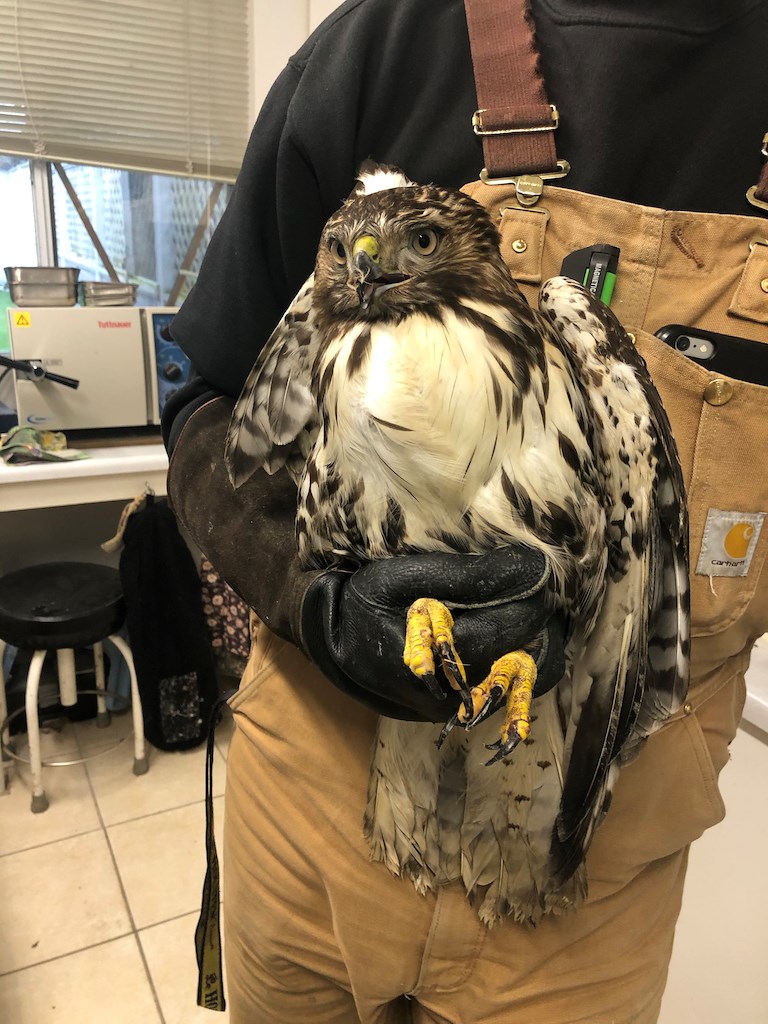 Blaze was so dehydrated when he arrived at OWL, getting a blood sample was an issue. By Kirsten Degner
Blaze was so dehydrated when he arrived at OWL, getting a blood sample was an issue. By Kirsten Degner
Lead poisoning is a common reason for raptors to end up at OWL. The neurotoxin is often ingested from fishing tackle or lead ammunition, or from other animals that have eaten tackle or ammunition, says the society’s website. Symptoms of lead poisoning, which affects birds as well as larger animals (like humans), can include loss of coordination, inability to stand, blindness, respiratory issues and more. A piece of lead the size of a grain of rice can kill a full-grown eagle in 48 to 72 hours, says the website.
Wildlife professionals can treat lead poisoning, if the bird comes in soon enough (though sometimes the damage is permanent), which OWL did with Blaze.
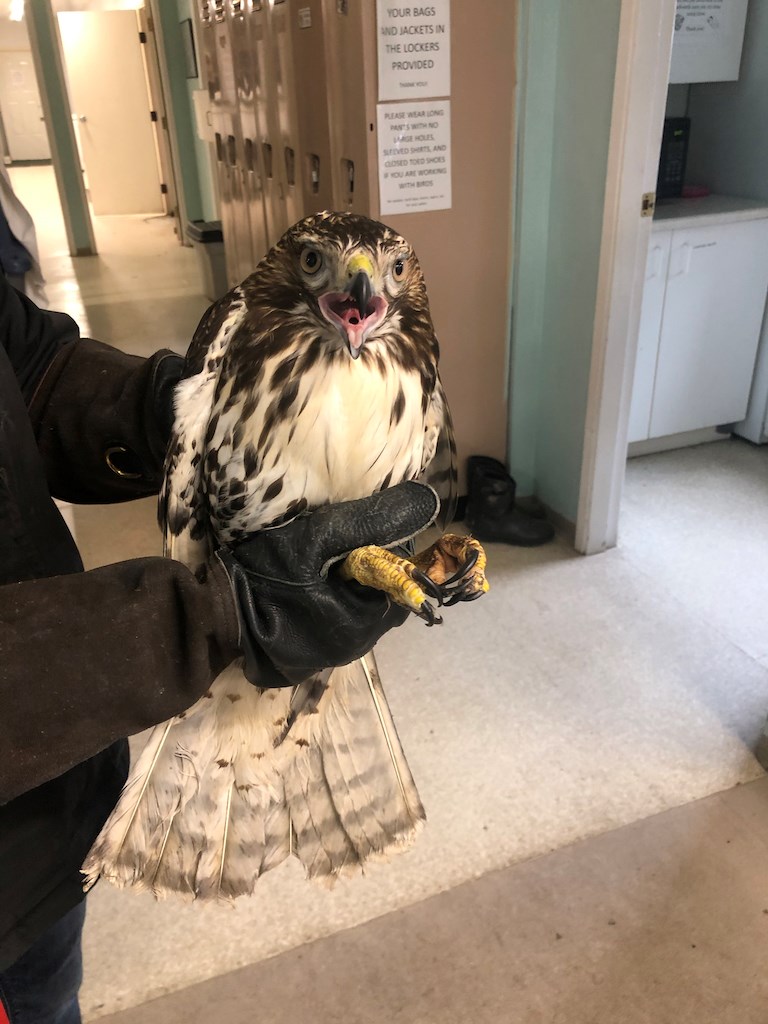 After a month of treatment for lead poisoning, Blaze was looking significantly better. . By Kirsten Degner
After a month of treatment for lead poisoning, Blaze was looking significantly better. . By Kirsten Degner
By the time Kirsten and Chloe picked up the hawk a few weeks ago, it had more than doubled in weight. “We were instructed to get him back to the island as fast as possible so that he would have ample daylight to get his bearings straight after being released,” says Kirsten.
Some of the crew that helped rescue Blaze gathered to see the now-healthy hawk off. “It was really lovely to see him to see him back on Bowen,” says Kirsten. “He flew out of his crate and way up into the trees.
“It was absolutely fantastic.”
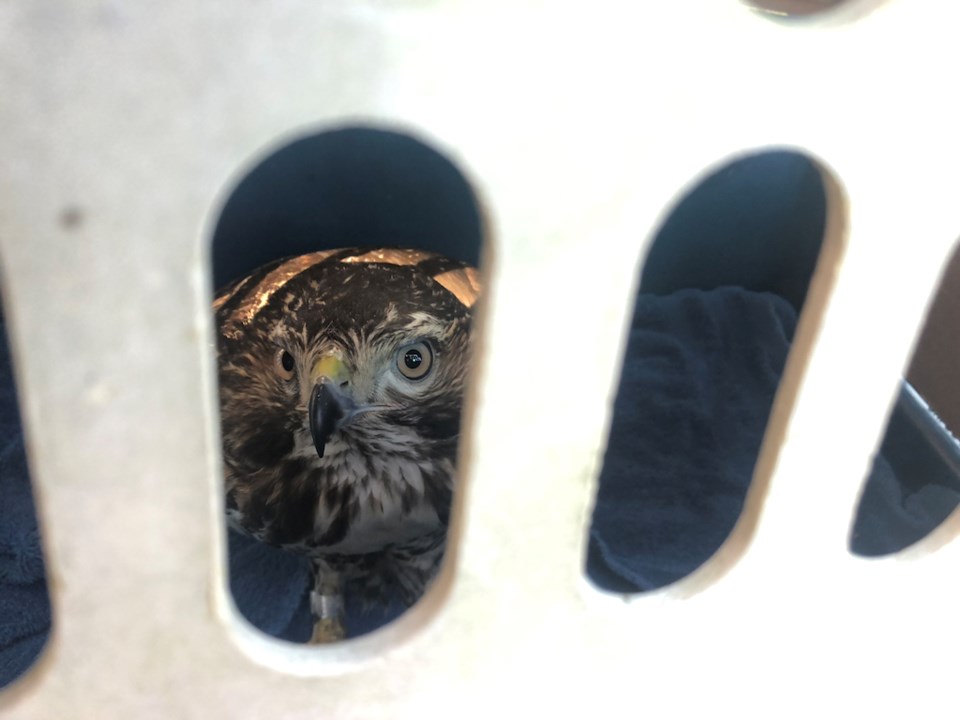 Blaze, ready for release on Feb. 23. By Kirsten Degner
Blaze, ready for release on Feb. 23. By Kirsten Degner
*
Kirsten and Chloe would like to say a huge thank you on behalf of Blaze to everyone that was involved in his rescue – read the entire account at thewoodlandstudio.ca/2021/02/its-been-quite-awhile-since-chloe-and-i.html.
For more information about OWL or to donate, visit owlrehab.org.
Another note: it is illegal to capture, transport, possess, import and export raptors without a permit, however, once an injured raptor is reported to OWL, the bird falls under OWL’s license and an expert will talk you through next steps.
